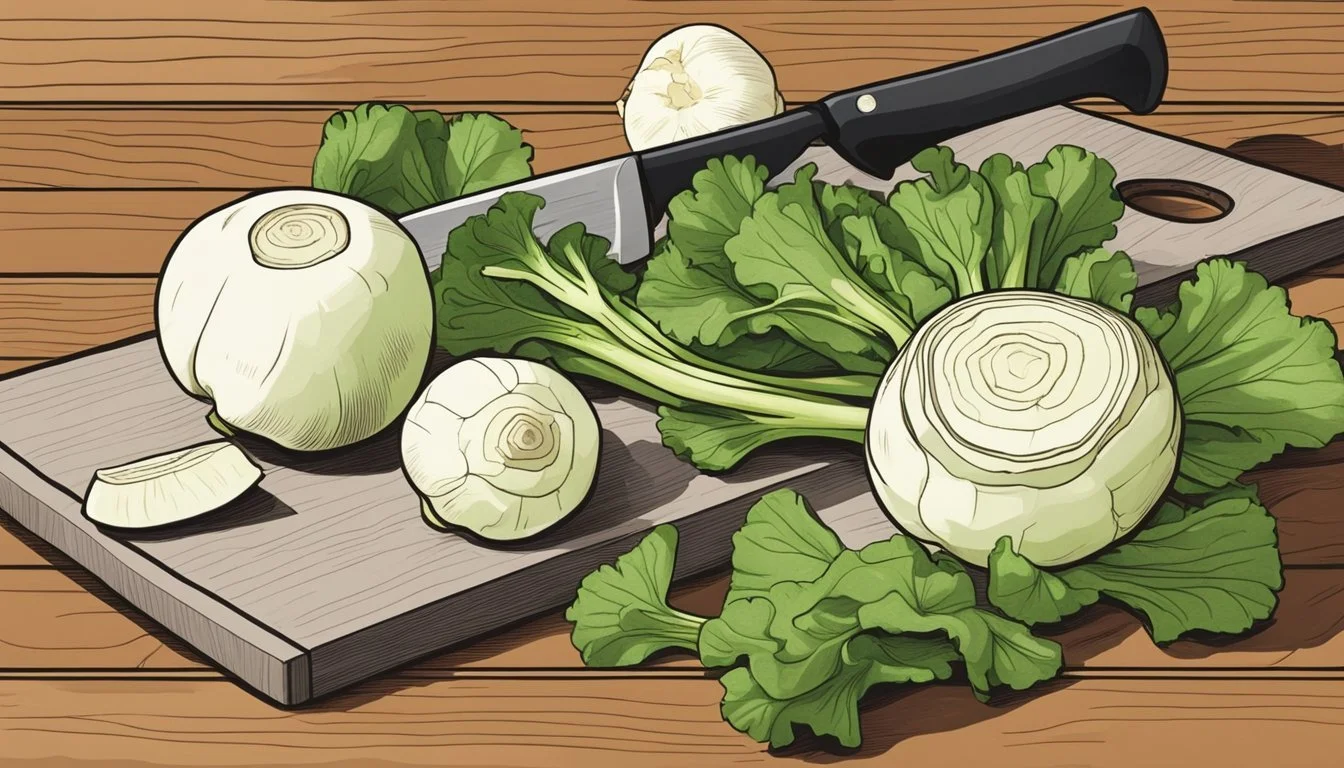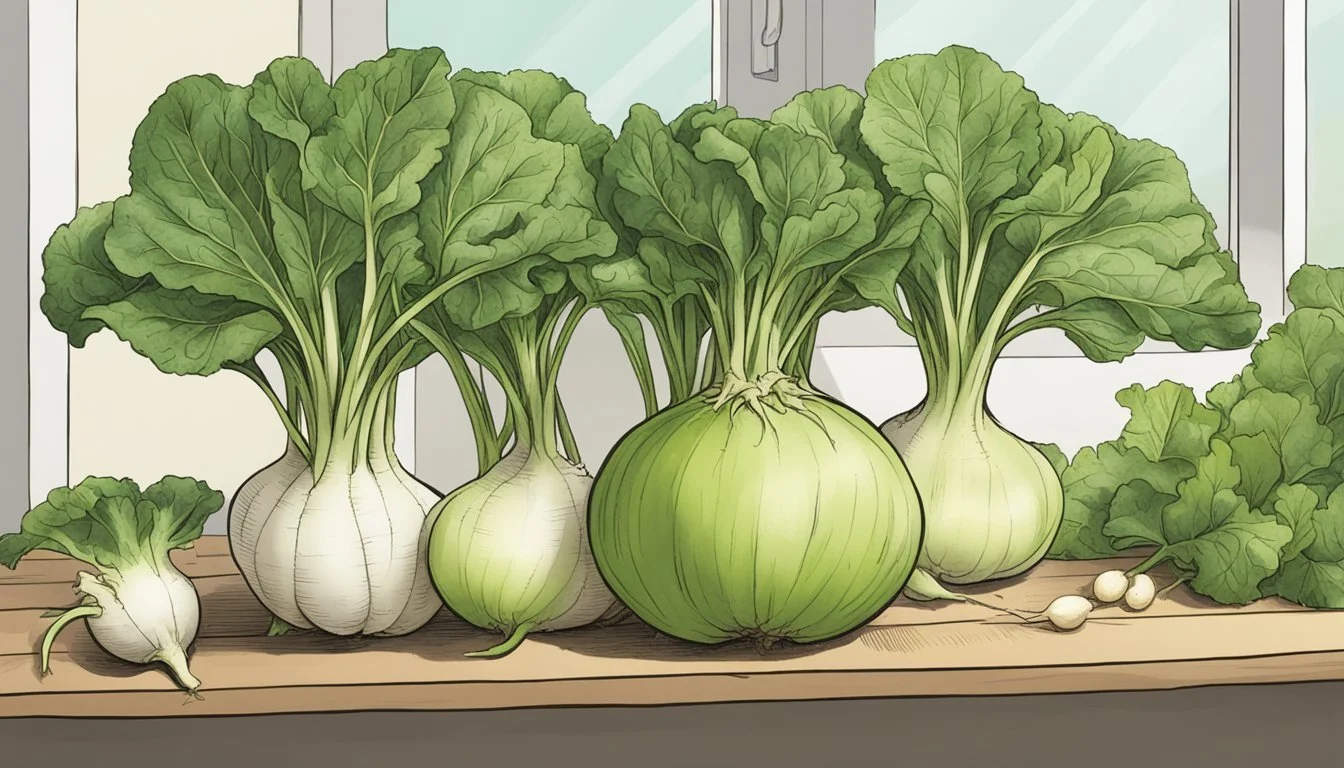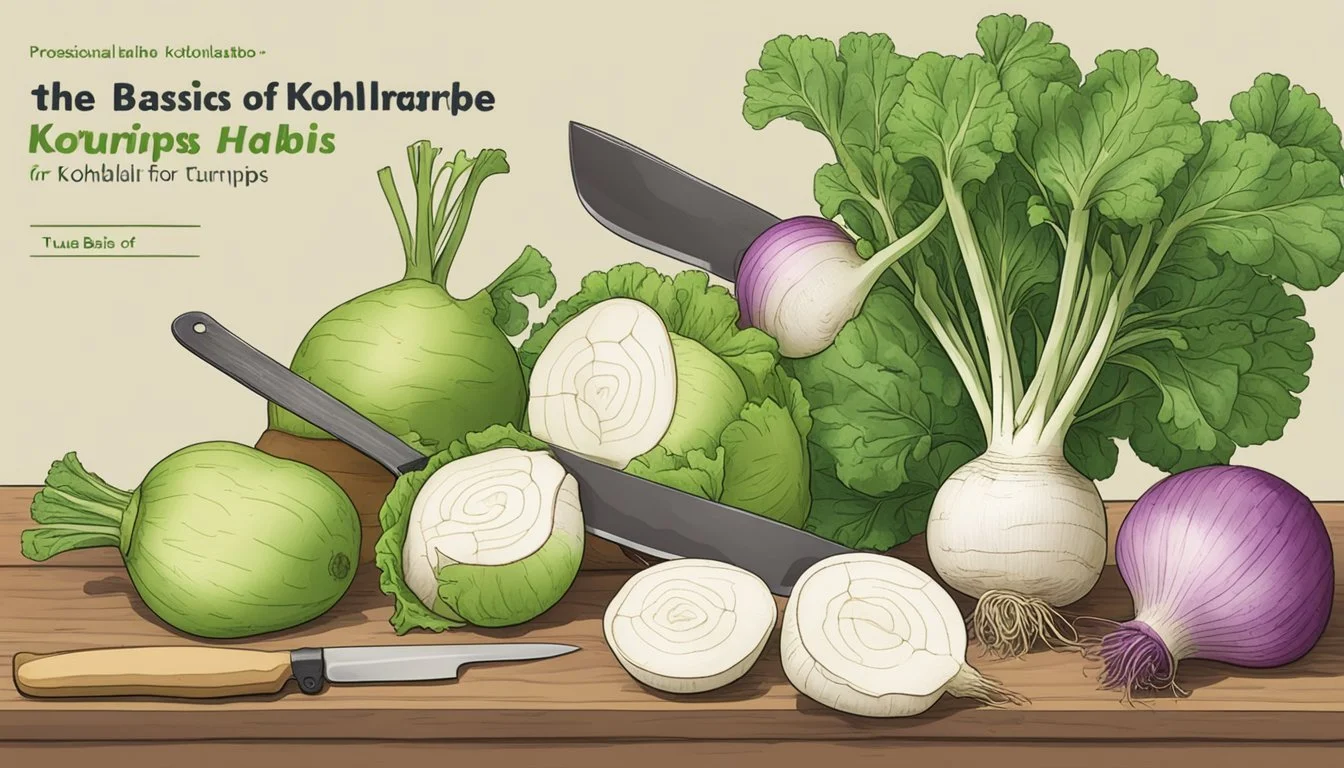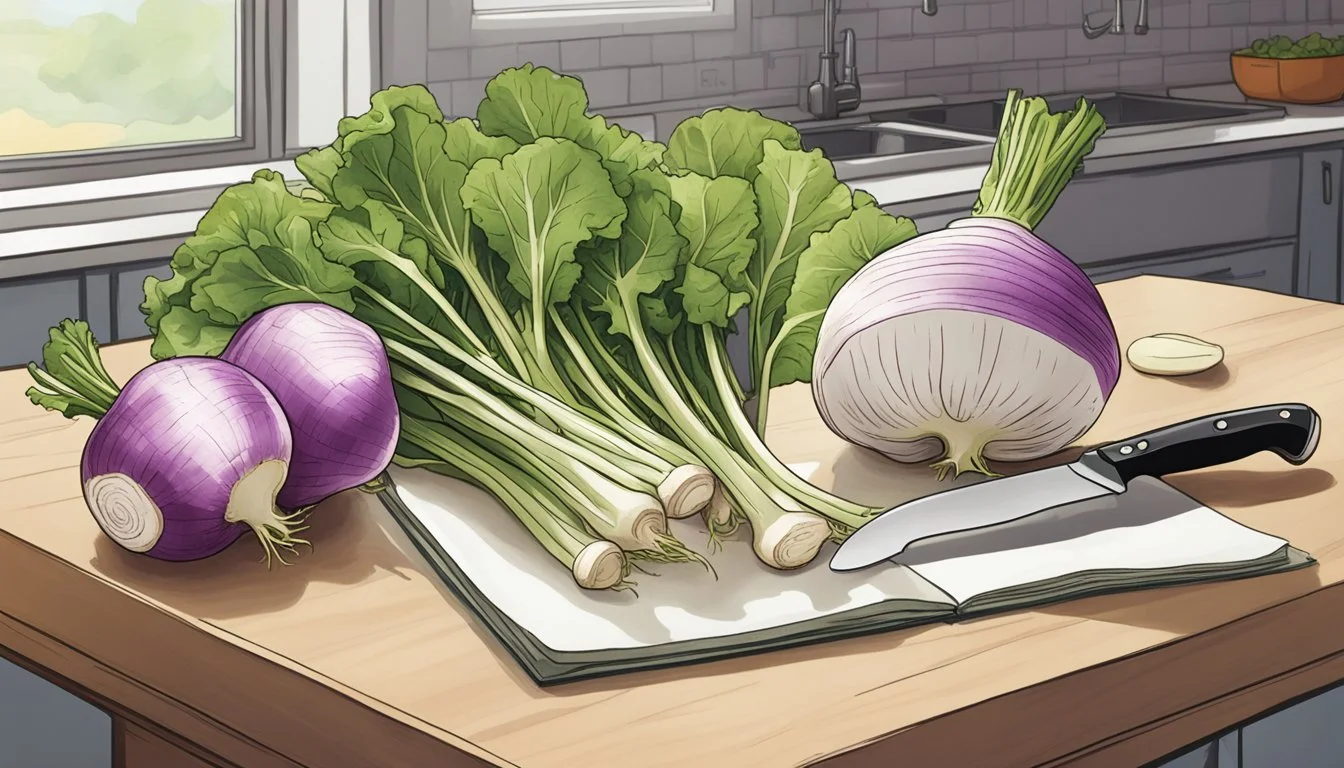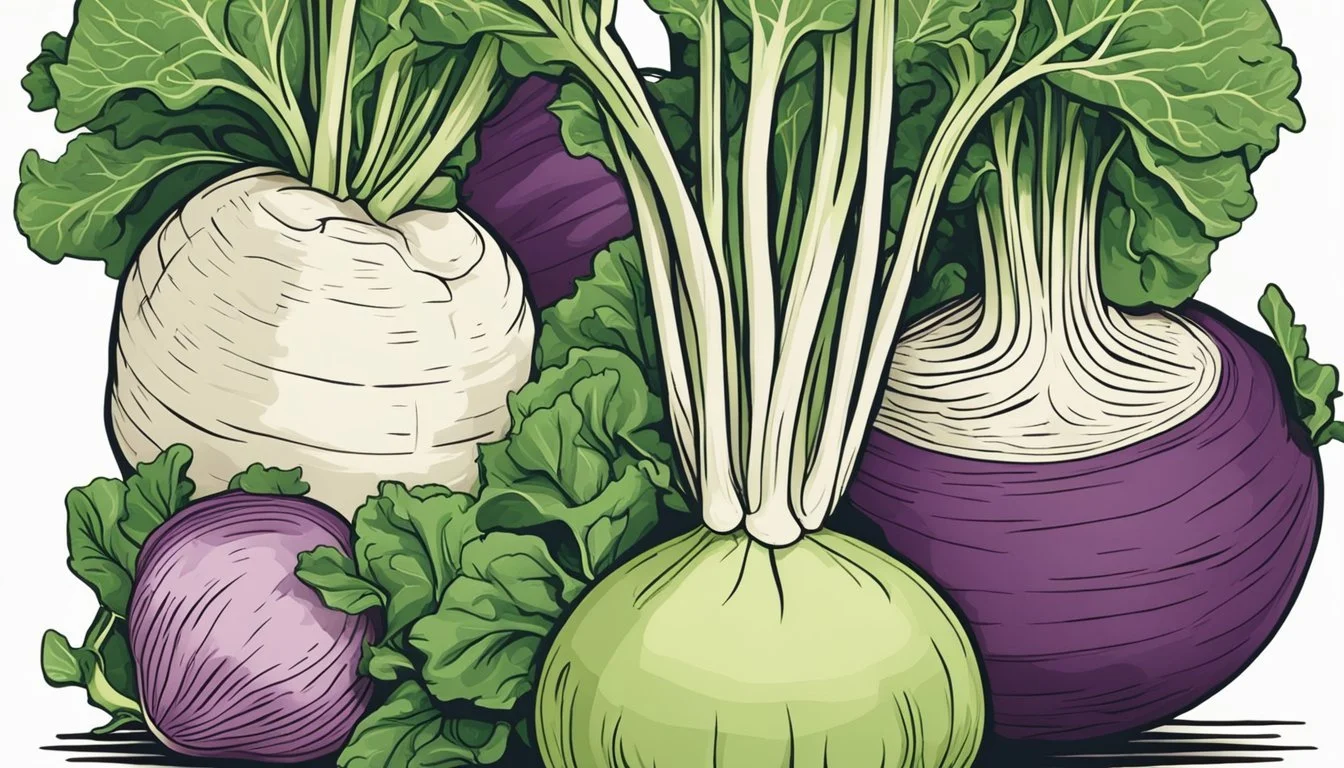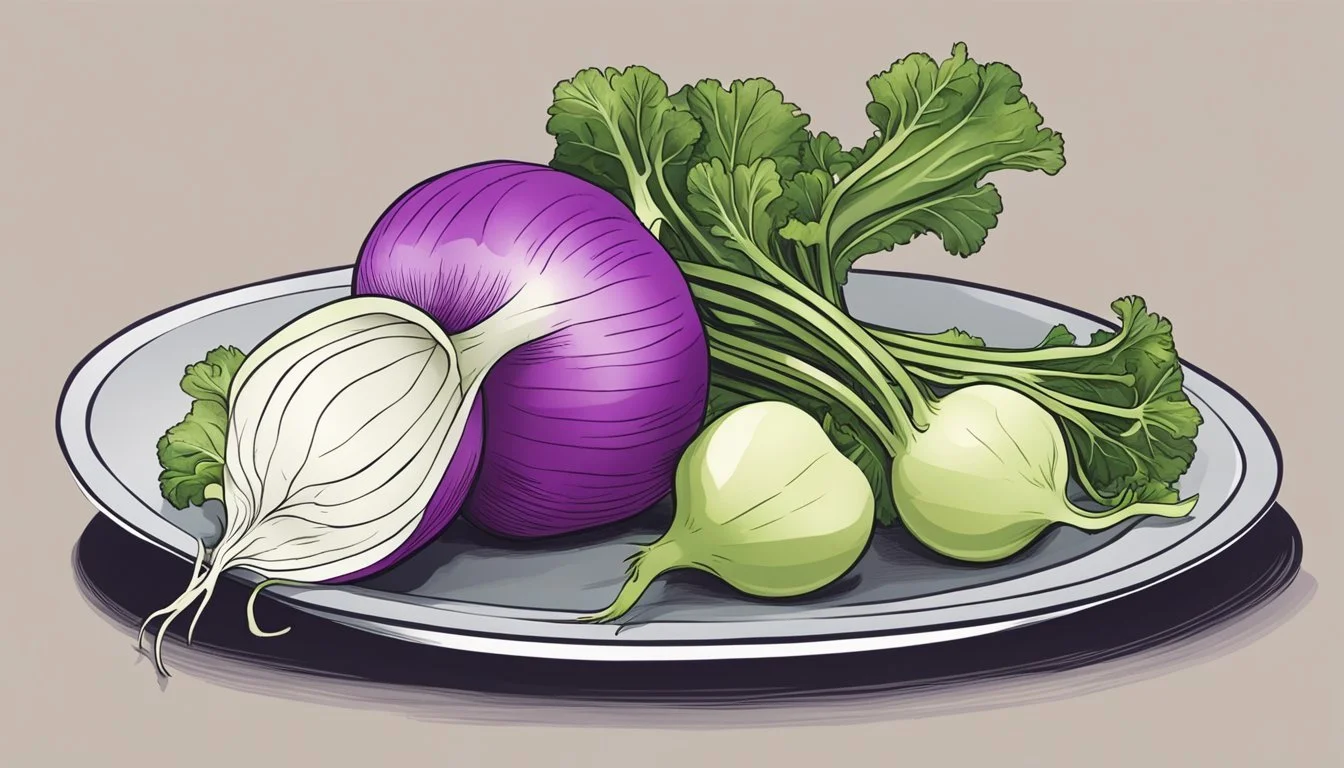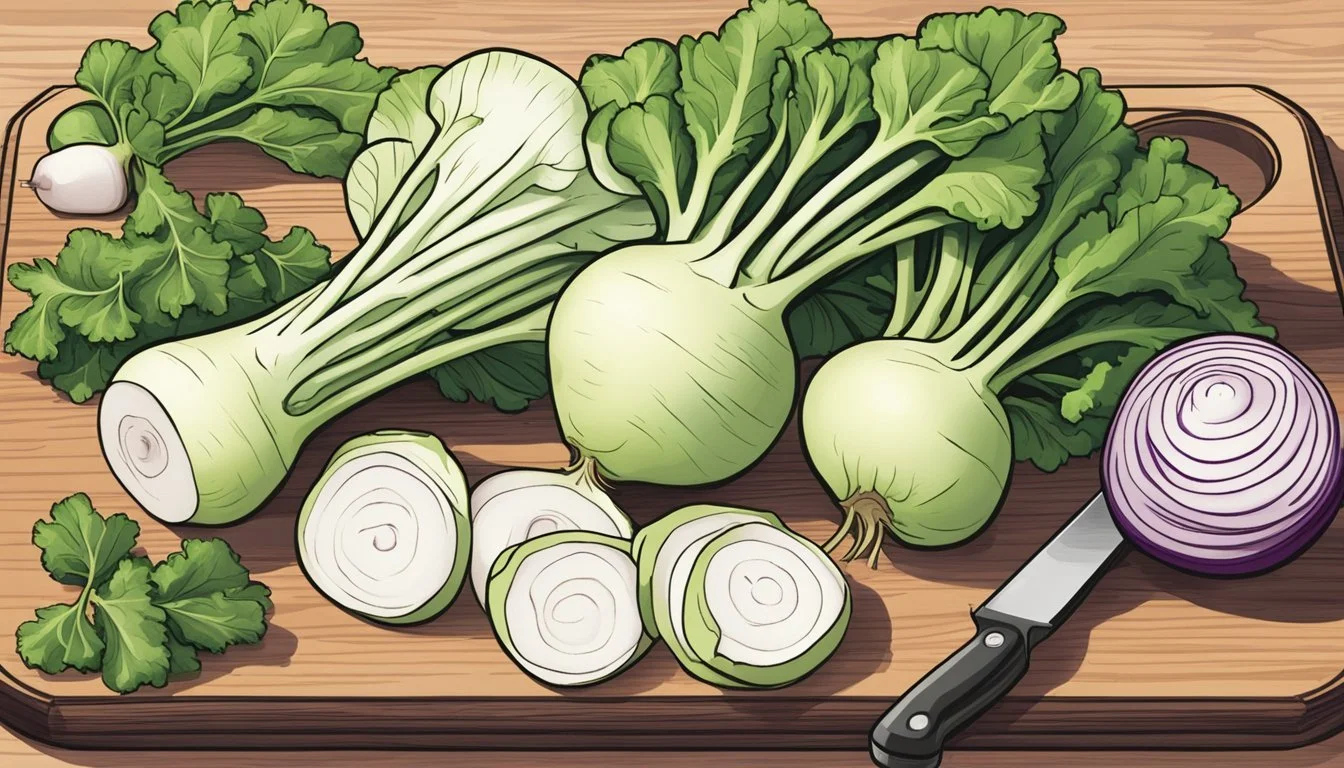How to Substitute Kohlrabi for Turnips in Your Recipes with Ease
In the world of root vegetables, turnips and kohlrabi may be considered understudies to more commonplace produce like potatoes and carrots. However, their unique flavors and textures have the potential to invigorate dishes with a novel twist. Kohlrabi, with its mild, sweet taste and crisp texture, offers a versatile base for an array of recipes. It can step in for turnips seamlessly in many culinary applications, thanks to their similar characteristics.
When turning to kohlrabi as a substitute for turnips, chefs and home cooks alike find that the former's robustness holds up well in cooking, mirroring the turnip's ability to maintain integrity when roasted, boiled, or steamed. Despite kohlrabi being sweeter and having a more tender flesh compared to the denser and sometimes sharper-flavored turnip, it is a fitting alternative in salads, soups, and stews where turnips are traditionally used.
Moreover, kohlrabi is not only a suitable culinary substitute but also a nutritional ally. Rich in vitamin C, potassium, and fiber, it contributes beneficial nutrients to one's diet. When replacing turnips with kohlrabi, it's usually preferable to match them in equal quantities to maintain the intended balance of flavors and textures within the dish.
Understanding Kohlrabi
Before integrating kohlrabi into recipes as a substitute for turnips, one must comprehend its origin, nutritional makeup, and culinary flexibility. This cruciferous vegetable holds unique characteristics and benefits.
Origin and Classification
Kohlrabi, part of the cabbage family, is a spherical vegetable with a stem that greatly swells and becomes bulb-like. It is known for its two main varieties, green kohlrabi and purple kohlrabi, both of which are more closely related to wild cabbage than the common turnip. As a cultivar of the same species as cabbage, broccoli, and cauliflower, Brassica oleracea, kohlrabi has been cultivated around the world for its distinctive growth and taste.
Nutritional Profile
Kohlrabi is esteemed for its rich nutritional content, exhibiting a higher concentration of certain nutrients compared to turnips. Here is an overview of its key nutrients per 100g serving:
Dietary Fiber: Approximately 3.6g
Protein: Roughly 1.7g
Vitamins: High in vitamin C and also contains vitamins A, K, and the B vitamins.
Minerals: Provides a good source of potassium, calcium, and magnesium.
Antioxidants: Contains phytochemicals which may offer antioxidant properties.
Given its nutrient density, kohlrabi is often referred to by some as a “superfood,” although this term is marketing-based and not a formal classification.
Culinary Characteristics
In culinary contexts, kohlrabi can be utilized similarly to turnips. Its texture is firm and can offer a satisfying crunch, ideal for both raw and cooked applications. The flesh is often described as mildly sweet, reminiscent of broccoli stems but with a more peppery note. It is versatile and can be employed in various dishes, from fresh salads to roasted vegetable medleys, adding a crisp and refreshing element to every bite.
The Basics of Turnips
Turnips are nutritious root vegetables that are often compared to their cousin the cabbage. They provide essential vitamins and minerals and are versatile in cooking.
Turnip Varieties
Turnips, sometimes referred to as the "German turnip," come in several varieties that can be broadly categorized by size and color. The most common type is the purple-top turnip, easily recognized by its white lower half and purple upper half. Baby turnips are smaller and tend to be sweeter, making them ideal for raw consumption.
Common Varieties:
Purple-Top White Globe: The standard variety for many recipes.
Golden Ball: Known for its yellow flesh and sweet taste.
White Egg: An egg-shaped turnip with a milder flavor.
Turnip's Culinary Uses
In the kitchen, turnips are quite flexible. They can be consumed raw, adding a crisp, peppery note to salads. When cooked, their texture softens, and they become milder in flavor, making them a suitable base for stews, soups, and side dishes.
Cooking Methods:
Roasting: Enhances their natural sweetness.
Boiling: Common for mashes or purees.
Steaming: Retains most nutrients, including vitamin C and potassium.
Turnips are not just a filler; they play a crucial role in certain diets where starchy vegetables are limited. They are lower in calories and carbohydrates than many other root vegetables, making them an excellent choice for a balanced diet.
Substituting Kohlrabi for Turnips
When substituting kohlrabi for turnips in recipes, one must consider differences in flavor and texture to achieve the best culinary results. Kohlrabi offers a comparable texture with its crispness and can be adapted for both raw and cooked applications.
Selecting the Right Kohlrabi
The first step in a successful substitution is choosing kohlrabi that is fresh and firm, as this will ensure the desired crunchy texture when replacing turnips. A smaller kohlrabi tends to have a milder and slightly sweet, earthy flavor, making it a flexible addition to dishes where turnips are usual. Look for kohlrabi with vibrant green leaves if present, a sign of freshness.
Preparing Kohlrabi as a Substitute
Kohlrabi can be used raw or cooked, similar to turnips.
For Raw Preparations:
Peel the kohlrabi and either grate or chop it into your desired shape.
To replace turnips in salads or slaws, use raw kohlrabi in the same quantity as you would turnips to maintain crunch and freshness.
For Cooked Preparations:
Kohlrabi can be roasted, steamed, boiled, or mashed.
Begin by peeling and cutting the kohlrabi into cubes or slices, similar to how you would prepare turnips.
When cooked, kohlrabi becomes tender while retaining a distinctive crunch, which can provide a pleasant texture in soups, stews, and side dishes.
Use a one-to-one ratio when substituting for turnips, and adjust cooking times as needed since kohlrabi might cook at a different rate than turnips, depending on size and preparation.
Recipe Adaptations With Kohlrabi
When incorporating kohlrabi as a substitute for turnips, one can achieve similar textures and flavors, making it an excellent choice for both raw and cooked preparations.
Kohlrabi in Salads
Salads and Slaw: For a crisp and fresh addition to salads or slaw recipes, where turnips might typically be used, kohlrabi can be substituted in equal measure. The bulb should be peeled and then either shredded or finely chopped. Its earthy yet slightly sweet profile pairs well with dressings and other salad ingredients.
Coleslaw: Replace turnips with kohlrabi to add a juicy crunch.
Radish Salads: Complement both radishes and kohlrabi for a dynamic texture combo.
Kohlrabi in Cooked Dishes
Cooked Dishes: Kohlrabi can sustain high cooking temperatures and maintain its savory flavor, making it versatile for an array of warm dishes.
Soups and Stir-fries: Chunks of kohlrabi contribute body and a mild sweetness to soups or stir-fries, similar to how turnips would.
Savory Flavors: To enhance savory dishes traditionally using turnips, pieces of kohlrabi can be roasted or steamed, offering a delicate sweetness.
Alternative Ingredients: Where recipes call for turnips, one may also consider celeriac or jicama for a substitution, but to closely mimic turnips, kohlrabi remains the ideal choice. Broccoli stems also provide a similar crunch and can stand in for turnips where appropriate.
Complementary Flavors and Textures
When substituting kohlrabi for turnips, one should consider the unique flavors and textures of kohlrabi. It boasts a mildly sweet, peppery taste reminiscent of radish, with a juicy and crisp texture akin to that of a broccoli stem or celery root.
Spices and Seasonings for Kohlrabi
Kohlrabi's subtle taste pairs well with a variety of seasonings. To enhance its natural flavors, consider the following:
Olive Oil: Drizzle to bring out the sweetness.
Celery Salt: Adds a savory note, perfect for raw or cooked kohlrabi.
When cooking kohlrabi, one might also explore using:
Ground Pepper: To emphasize the peppery notes.
Herbal Seasonings: Such as thyme or rosemary, to complement the vegetable's mild flavor.
Vegetables Pairing With Kohlrabi
Several vegetables work well with kohlrabi, either as complements or contrasts to its texture:
Swiss Chard: Adds a hearty, leafy component.
Kale: Introduces a slightly bitter counterpoint, enriching the dish.
Celery: With its high water content, celery contrasts the kohlrabi's dense texture.
Radish: Amplifies the peppery flavors, while adding an extra crunch.
When choosing vegetables to pair with kohlrabi, consider how their textures and flavors will blend with the kohlrabi's profile and the overall balance of the dish.
Kohlrabi in Special Diets
Kohlrabi is a versatile vegetable that can comfortably fit into various diets, particularly for those counting calories or dealing with dietary restrictions. Understanding its nutritional profile helps in making informed decisions.
Low-Calorie Diet Considerations
Kohlrabi is low in calories, offering a suitable addition for anyone on a calorie-controlled diet. Here are specific attributes of kohlrabi that make it conducive to a low-calorie diet:
Low-Calorie Content: One cup of raw kohlrabi contains approximately 36 calories, which is minimal compared to many other vegetables.
High in Dietary Fiber: With about 5 grams of fiber in one cup, kohlrabi helps in creating a feeling of fullness, preventing overeating.
Dietary Restrictions and Allergies
For individuals with dietary restrictions and allergies, kohlrabi is typically a safe choice. Its attributes include:
Gluten-Free: It is a suitable vegetable for those with gluten intolerance or celiac disease.
Allergen-Free: Kohlrabi does not contain common allergens found in other substitutes like nuts or dairy.
Nutritious: Packed with vitamins and minerals, kohlrabi offers health benefits without the risk of interfering with most diet restrictions.
Storage and Preservation of Kohlrabi
When it comes to keeping kohlrabi fresh, understanding the appropriate storage techniques is key. The methods range from simple refrigeration tactics for short-term use to more involved preservation steps for long-term storage.
Short-Term Storage
For temporary storage, kohlrabi should be prepared properly. The leaves must be removed because they can draw out moisture from the bulbs. Once prepped, the bulbs can be stored in the vegetable crisper of a refrigerator. To maintain optimal freshness, kohlrabi should be placed in a loose plastic bag with perforations, which allows for adequate airflow while retaining moisture.
Preparation: Remove leaves; keep bulbs
Location: Vegetable crisper in refrigerator
Container: Perforated plastic bag
Long-Term Preservation
When preserving kohlrabi for extended periods, freezing and pickling are viable methods. To freeze kohlrabi, one must first blanch the cut pieces to prevent loss of texture, flavor, and color. After blanching, quickly cool the pieces in ice water, drain, and store in airtight containers or freezer bags.
To pickled kohlrabi, one needs to create a pickling solution usually comprising vinegar, salt, and sometimes sugar. The peeled and sliced kohlrabi are immersed in this solution and stored in sealed jars. Properly pickled kohlrabi can last for several months.
Freezing:
Blanch cut kohlrabi for 2-3 minutes
Cool immediately in ice water
Store in airtight containers or freezer bags
Pickling:
Prepare pickling solution (vinegar, salt, sugar)
Peel and slice kohlrabi; immerse in solution
Seal in jars and store
Exploring the Broader Culinary World
The culinary adaptability of kohlrabi extends beyond its odd-looking appearance, as it takes on various roles from casseroles to stir-fries within the culinary world. This member of the Brassica family, also known as German turnip, is a versatile ingredient that fits easily into a wide range of dishes around the globe.
Innovative Uses of Kohlrabi
Kohlrabi is no stranger to innovation in the kitchen, as its crisp texture lends itself splendidly to a variety of culinary uses. One might find it baked into a comforting casserole, providing both structure and a subtle sweetness. Alternatively, it can be roasted, where its edges caramelize, bringing out a more complex flavor profile. In a stir-fry, kohlrabi adds a welcome crunch and readily absorbs the flavors of the sauces and spices it's cooked with. Even sandwich creators are harnessing the unique taste of kohlrabi, employing it as a crunchy, nutritious filling.
Kohlrabi's Place in Global Cuisines
Kohlrabi has cemented its status as a global culinary player. Chefs and home cooks alike appreciate its flexibility to adapt to different cooking methods and ingredients. It is part of many traditional German dishes, validating its nickname, "German turnip." Across different continents, kohlrabi is seen as a key component in salads, where it's often served raw for its refreshing bite, or used as a base in a blended soup for a silkier texture. In Asian cuisines, it's not uncommon for kohlrabi to play a leading role in pickles, complimenting spicy and savory flavors with its cool, crisp personality.
Conclusion
Substituting kohlrabi for turnips can be an easy and successful endeavor in a variety of dishes. Chefs and home cooks can approach this substitution with confidence, knowing that kohlrabi, a member of the brassica family, shares similar characteristics with turnips. Both vegetables can be prepared cooked or raw, and offer that desired crisp texture and a slightly sweet flavor, especially when young and tender.
Table of Nutritional Comparison (per 100g):
Nutrient Kohlrabi Turnips Calories 27 28 Carbohydrates 6.2g 6.4g Fiber 3.6g 1.8g
Cooking with kohlrabi instead of turnips can lead to an equally satisfying culinary adventure. The mild yet distinct taste of kohlrabi can complement the many recipes that traditionally call for turnips. To ensure the best results:
Use an equal amount of kohlrabi in place of turnips by volume or weight.
Adjust cooking times as necessary, keeping in mind that kohlrabi may require slightly less time to become tender.
Kohlrabi's versatile nature makes it a reliable alternative, one that upholds the integrity of the dish while introducing a new dimension to its flavor profile. Consumers may embrace the use of kohlrabi, enhancing meal diversity and potentially elevating nutritional value.
Incorporate kohlrabi with a coherent understanding of how it pairs with complementary ingredients, ensuring that every recipe adjustment is both thoughtful and deliberate. With knowledge and experimentation, one can navigate this substitution effectively, adding an inspired twist to traditional turnip recipes.

